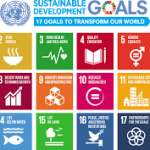 In the last month we had several FHSS-Psychology success stories. The first one was a recently accepted joint publication between Mr. Paul Fairbairn and Dr. Fotini Tsofliou in the Department of Rehabilitation and Sport Sciences, Dr. Andrew Johnson in BU’s Department of Psychology. The joint paper is called ‘Effects of a high DHA multi-nutrient supplement and exercise on mobility and cognition in older women (MOBILE): A randomised semi-blinded placebo controlled study” in the British Journal of Nutrition [1].
In the last month we had several FHSS-Psychology success stories. The first one was a recently accepted joint publication between Mr. Paul Fairbairn and Dr. Fotini Tsofliou in the Department of Rehabilitation and Sport Sciences, Dr. Andrew Johnson in BU’s Department of Psychology. The joint paper is called ‘Effects of a high DHA multi-nutrient supplement and exercise on mobility and cognition in older women (MOBILE): A randomised semi-blinded placebo controlled study” in the British Journal of Nutrition [1].

Secondly, Dr. Sarah Collard in the Department of Psychology, Dr. Pramod Regmi in the Department of Nursing Science and FHSS Visiting Professor Katherine Barnard-Kelly are to be congratulated on their publication: ‘Exercising with an automated insulin delivery system: qualitative insight into the hopes and expectations of people with type 1 diabetes’ [2].
 And last, but not least, Dr. Bibha Simkhada in the Department of Nursing Science together with FHSS colleagues Dr. Michele Board and Prof. Edwin van Teijlingen and Dr. Shanti Shanker in the Department of Psychology were awarded £17,180 in the most recent internal GCRF call. Their proposed project ‘The key issues in Dementia in South Asia’ will run from 2020-2021. Both Dr. Simkhada and Dr. Shanker are Global Engagement Lead (GEL) in their respective departments.
And last, but not least, Dr. Bibha Simkhada in the Department of Nursing Science together with FHSS colleagues Dr. Michele Board and Prof. Edwin van Teijlingen and Dr. Shanti Shanker in the Department of Psychology were awarded £17,180 in the most recent internal GCRF call. Their proposed project ‘The key issues in Dementia in South Asia’ will run from 2020-2021. Both Dr. Simkhada and Dr. Shanker are Global Engagement Lead (GEL) in their respective departments.
Good to see so many great cross-BU collaborations!
Professor Edwin van Teijlingen
CMMPH
References:
Fairbairn, P., Tsofliou, F., Johnson, A., Dyall, S.C. (2010) Effects of a high DHA multi-nutrient supplement and exercise on mobility and cognition in older women (MOBILE): A randomised semi-blinded placebo controlled study, British Journal of Nutrition (accepted).
Collard, S.S., Regmi, P.R., Hood, K.K., Laffel, L., Weissberg-Benchell, J., Naranjo, D., Barnard-Kelly, K. (2020) Exercising with an automated insulin delivery system: qualitative insight into the hopes and expectations of people with type 1 diabetes, Practical Diabetes 2020; 37(1): 19–23.
 This project led by Prof. Edwin van-Teijlingen and Dr. Shanti Shanker focuses on grassroots level centers addressing the lack of accessibility in rural India. This project collaborates with the Taluka Health Officer at Paud (Mulshi, Dr Ajit Karanjkar) and local medical officers.
This project led by Prof. Edwin van-Teijlingen and Dr. Shanti Shanker focuses on grassroots level centers addressing the lack of accessibility in rural India. This project collaborates with the Taluka Health Officer at Paud (Mulshi, Dr Ajit Karanjkar) and local medical officers.























 EMA held its 6th triennial education conference in Malmo, Sweden from the 28-29 November 2019. Dr. Luisa Cescutti-Butler and Professor Sue Way had three abstracts accepted, two of which highlighted units of learning in our midwifery undergraduate programme (Evaluating the student experience of introducing newborn infant physical theory into a pre-registration midwifery programme in the UK and An evaluation of the student experience of peer facilitated learning) and a further one which was focused on a national collaborative project on grading practice (Developing a set of key principles to achieve consistency in assessing pre-registration midwifery competency in practice in the UK). The opening keynote speaker at the EMA Conference was Fran McConville – Midwifery Expert at WHO. Fran presented on ‘Strengthening Quality Midwifery Education for Universal Health Coverage 2030’. Our takeaway message from her presentation was the following important statement: “When midwives are educated to international standards, and midwifery includes the provision of family planning……more than 80% of all maternal deaths, stillbirths and neonatal deaths could be averted”.
EMA held its 6th triennial education conference in Malmo, Sweden from the 28-29 November 2019. Dr. Luisa Cescutti-Butler and Professor Sue Way had three abstracts accepted, two of which highlighted units of learning in our midwifery undergraduate programme (Evaluating the student experience of introducing newborn infant physical theory into a pre-registration midwifery programme in the UK and An evaluation of the student experience of peer facilitated learning) and a further one which was focused on a national collaborative project on grading practice (Developing a set of key principles to achieve consistency in assessing pre-registration midwifery competency in practice in the UK). The opening keynote speaker at the EMA Conference was Fran McConville – Midwifery Expert at WHO. Fran presented on ‘Strengthening Quality Midwifery Education for Universal Health Coverage 2030’. Our takeaway message from her presentation was the following important statement: “When midwives are educated to international standards, and midwifery includes the provision of family planning……more than 80% of all maternal deaths, stillbirths and neonatal deaths could be averted”.







 elation to their needs, rather than the focus being almost exclusively on their babies.
elation to their needs, rather than the focus being almost exclusively on their babies.












 BU academic publishes in online newspaper in Nepal
BU academic publishes in online newspaper in Nepal Final day of the ESRC Festival of Social Science
Final day of the ESRC Festival of Social Science Using Art to enhance Research
Using Art to enhance Research Register now to attend the 17th Annual Postgraduate Research Conference – Wednesday 3 December 2025
Register now to attend the 17th Annual Postgraduate Research Conference – Wednesday 3 December 2025 Portrait Concert featuring BU academic at L’Espace du Son Festival 2025, Brussels
Portrait Concert featuring BU academic at L’Espace du Son Festival 2025, Brussels ECR Funding Open Call: Research Culture & Community Grant – Application Deadline Friday 12 December
ECR Funding Open Call: Research Culture & Community Grant – Application Deadline Friday 12 December MSCA Postdoctoral Fellowships 2025 Call
MSCA Postdoctoral Fellowships 2025 Call ERC Advanced Grant 2025 Webinar
ERC Advanced Grant 2025 Webinar Horizon Europe Work Programme 2025 Published
Horizon Europe Work Programme 2025 Published Horizon Europe 2025 Work Programme pre-Published
Horizon Europe 2025 Work Programme pre-Published Update on UKRO services
Update on UKRO services European research project exploring use of ‘virtual twins’ to better manage metabolic associated fatty liver disease
European research project exploring use of ‘virtual twins’ to better manage metabolic associated fatty liver disease